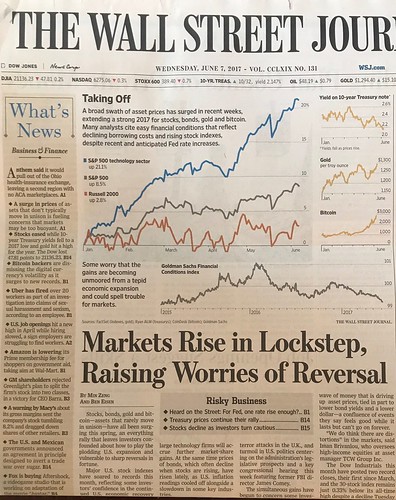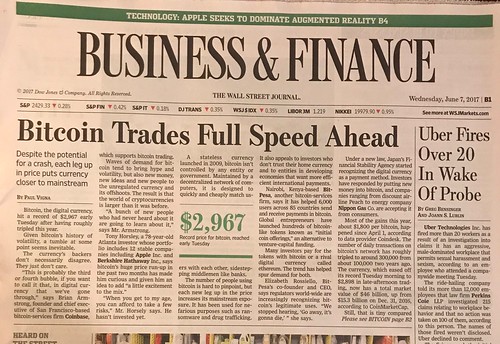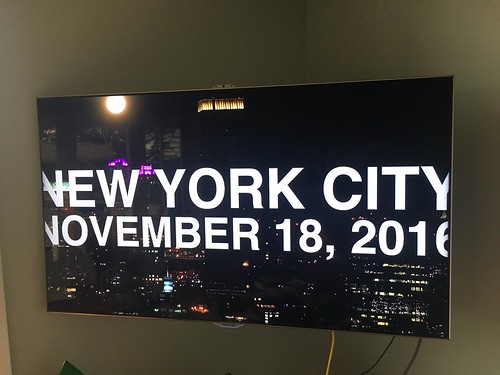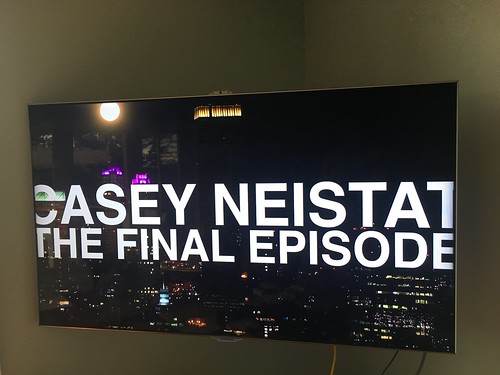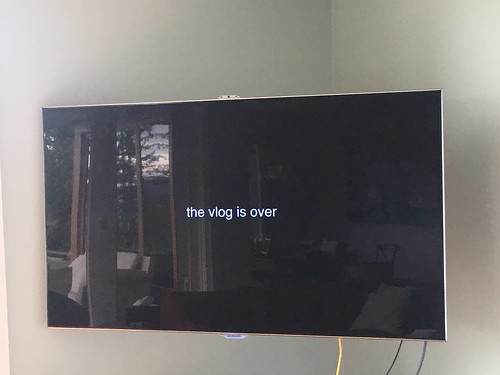First of all a Happy New Year to all my readers!
In 2016 I started paying a lot more attention to my health and especially to what I eat. There were several reasons for that, but an important source of inspiration was Tim Ferris’ podcast series. Among others I started experimenting with the ketogenic diet, a high fat and protein diet that can put your body into ketosis. I also started doing intermittent fasting, by skipping breakfast regularly and having a late lunch and thereby fasting for 16-18 hours a day. When reading more about fasting I found that many studies have shown that this can lead to an increased life span.
That peaked my interest so I started reading more about the factors that determine human longevity. I was fascinated by what I found and by how far research has come already. I also realized that mainstream media is playing this down a bit. Until a few months ago I thought it would be impossible to live forever, but now I realize that we are actually pretty close to a breakthrough.
Aging is a disease, a disease that can be stopped and that can be reversed. We know how to do it already, but we are not able to do it technically yet. There are some simple ways to start doing this and I’ll include these in this post as well. Why mass media does not pick up that story is something I don’t get. It’s probably just like with Bitcoin, only when it breaks through it gets on the radar of journalists.
This post is for a large part based on an Exponential View podcast I recently listened to, an interview with Dr. Shamil Chandaria. If this topic interests you you should listen to it, it goes a bit deeper than my analysis and is a good start to dig deeper into this topic.
How long can a human being live? If you were born about 150 years ago your median lifespan would be about 45 years. Right now the median lifespan of a newborn in the US is about 88 years, so roughly double what it was in the mid 1800s. However, the oldest person on earth around 1850 was over 100 years old, but the oldest person alive right now is about 115 years old (the verifiably oldest person alive made it to 122 years). That means that even if we live healthy, avoid major accidents and are lucky enough not to get cancer, our bodies will eventually stop working when we turn 120 years old. So longevity is not only about getting us to live to 120 (which is doable if you’re lucky to avoid major diseases), but especially to get us over the 120 year age cliff.
But probably even more important is to be healthy when you get older. If you spend your last 30 years sick in bed there is no real use in getting older. If I would be so sick that I knew I would never be able to have a normal active life anymore I would almost certainly decide to do euthanasia. Getting older for the sake of getting older doesn’t make sense, you should be able to have a meaningful life. So longevity is also about the quality of life. Health economists have been able to quantify this with the term QALY (quality life-adjusted year). Basically if you are completely healthy one year is worth one Qaly, if you are dead you accumulate zero Qalys per year. There are situations where your life is so bad that you actually accumulate negative Qalys, but I won’t go there in this post. The goal of longevity is to increase the Qaly value of your life as much as possible.
How many factors do you think will determine how long you will live? I always assumed there would probably be at least a 100 factors, but it turns out there are only 10 factors. We already know what these 10 factors are and scientists think that we can solve most of these problems over the next 25 years. I wonder if they take artificial intelligence into account in that calculation, in combination with the exponential rate of change in technology? If not immortality may be a reality much earlier already. But even if it still takes another 25 years this means we may be able to live forever if we manage to stay healthy until about 2050!
To me that is fascinating. There may be people among us now already that may never die. It sounds crazy because we are all programmed to eventually die, but we will likely be able to change our code. Obviously this has a lot of social and economic implications. Things like what does this mean for our world if we keep procreating? Do we really want to live forever? What happens to the sense of urgency that many scientists have, knowing that you only have a limited number of years on this planet? I won’t go into that here, but the podcast above touches on this subject, so you may want to listen to that. There are tons of articles on that on the Internet as well of course, although many focus on longevity in the sense of all of us living longer, not all of us being immortal (which is a obviously a big difference).
As I mentioned earlier, aging is a disease. As we age we get more cellular damage, but we also have a cellular repair mechanism. When we are young our cell repair is faster than the damage we do, but at a certain point in our lives the repair can’t keep up with the damage anymore. The result is aging. So one important thing longevity science is looking at is how to improve the repair mechanism. Cells replicate and each time that happens a bit of so called telomeres gets removed. Telomeres are the caps at the end of each strand of DNA that protect our chromosomes. That is a problem but it limits how often cells can replicate (this is called the Hayflick limit), and after the telomeres are gone your cell basically dies.
It turns out that there is an enzyme that increases the length of telemores. Some animals (like lobsters) have activated this enzyme, meaning that they keep on growing and eventuallly die because they get too big. If we are able to activate this enzyme (which is called telomerase) we may be able to increase the number of times that our cells can replicate. That could lead to cellular immortality which is a huge step for longevity. So far only one person on this planet has done telomerase gene therapy. Her name is Liz Parrisch, the CEO of Seattle-based biotech company BioViva. Initial results seem very promising (her telemores had increased in length by 620 base pairs), but of course a sample of one is too small to lead to any conclusions. But this is a very promising start!
Of course gene therapy is not available to anyone yet, and likely won’t be for a couple of more years, so what else could you do? The easiest and probably one of the most effective ways of living longer is by reducing the number of calories that you consume. This is easy in the sense that you don’t need a doctor to prescribe you medecine, but in our society of (over)eating and drinking it is not easy to keep it up. Luckily there is a solution for that and that’s intermittent fasting. It’s something I have been doing on and off for the past couple of months and it’s very easy to do. Basically you eat dinner before 8 pm and then don’t eat any calories anymore before you go to bed. The next morning you skip breakfast (You can have water, coffee or tea. I try to start every day with a big glass of warm water, often with lemon) and you don’t have lunch before 12. In that way your body is in fasting mode for at least 16 hours per day. You get used to it very quickly and I am not hungry at all.
Once you have done some intermittent fasting you can try to go for just one meal a day during one or two days per week, or even go to 2-3 day fasts. It’s not that hard to do, but you have to be motivated. You will see results very quickly. I feel like I am in a better shape than ever before, I sleep better and I lost weight as well. Keep in mind that you should not overindulge during your one or two meals per day, fasting should be done in a combination with caloric restriction and preferably also with a reduced number of carbs. If you’re interested in this do a Google search on ketogenic diet and intermittent fasting.
When calories are scarce cells can be turned into repair mode. Cells will start to recycle components, including ones that do not work well. Damaged proteins, like the ones that will cause Alzheimer’s, could disappear as well. This may sound too good to be true, but lots of studies have actually shown this works. My strong belief is that big pharma doesn’t really want you to know about these simple ways of getting into better health, that’s why most people don’t know about it. Scary how our world works…
Several of my friends in Silicon Valley take Metformin supplements. Metformin is a traditional anti-diabetes drug that works by depressing glucose production in the liver. But it also increases the number of oxygen molecules released into a cel, which increase robustness and longevity. After doing a lot of research on it I am planning to start taking Metformin this year.
Another drug that seems even more powerful than Metformin is Rapamycin. I first learned about Rapamycin in a super interesting Tim Ferris podcast that the taped on Easter Island with some leading longevity scientists (Rapamycin was first discover on Easter Island). It turns out Big Pharma learned about it as well and Novartis is pushing to bring a Rapamycin pill to market. Rapamycin has a lot more potential risks than Metformin (mainly because it’s not been tested as much), but it’s probably safer to take it than to not take it. It has shown that mice live up to 60% longer and the effect on dogs is also amazing. So my quest in 2017 will be to find a legitimate supplier of Rapamycin, I really want to give this a try.
I think if you will start going on a ketogenic diet, reduce calories through fasting and take Metformin regularly (next to doing sports 4-5 times a week and make sure you get all vitamins and minerals that you need, which is a prerequisite for being healthy), you should be able to have a more healthy life and you should be able to keep aging in check. It’s not a recipe to turn 120 but it may help you to reduce the risk of cancer, diabetes and Alzheimer’s. If you want to stay healthy for the next 20-30 years this may help to get you there.
There are a lot more ways to help you with anti-aging, but most are hard to do right now or quite expensive. A relatively easy one is hyperbaric oxygen therapy, something that professional athletes are already using regularly to recover more quickly from injuries. The easiest way is to buy an hyperbaric oxygen chamber and starting sleeping in it every now and then, you can find basic models online for around $10,000. Hyperbaric oxygen therapy helps to grow new blood vessels into tissue, and it’s been proven that it causes stem cell release from bone marrow into circulation. Next to that it suppresses inflammation, which is also important for aging because most chronic diseases are now recognized to result from chronic inflammation.
If you have enough money to spend you can start looking at doing stem cell therapy (you can easily get this done in Thailand already). This seems to be very effective and it might become more normal over the next couple of years. Another therapy that can quickly rejuvenate you is to replace your blood by young blood (parabiosis). Among others venture capitalist Peter Thiel is doing this already. It may be a way to not only stop aging but to actually reverse it. Tests in mouse have shown amazing results, among other by rejuvenating aging tissue and by awakening old stem cells. Advanced clinical studies on humans are underway in China and Korea already. Of course this is not without risk, what would happen it stem cells would grow uncontrollably for example?
There are several other ways to treat or reverse aging, but these are the most common ones (at least for now). Soon we’ll likely get gene editing therapies (think about CRISPR), but we are not there yet. The most important thing for me is that reversing aging turns out to be an engineering problem and that means it can be solved. We now know what is needed but we don’t have all the tools to do it yet. There has been a lot of progress and it seems to be just a matter of time before we solve all of them.
I am not sure if we should strive to be immortal, but beating death would certainly change humanity completely. To me this field is fascinating and I will keep on doing my own research. I will also keep doing more of my own trials with fasting and taking supplements during the coming year. For me the main goal is to stay healthy into old age and to do it in a way that does not disrupt my life completely while doing it. So you won’t find me sleeping in a hyperbaric oxygen tent soon, nor will I do any young blood transfusions or go to a stem cell clinic. Enjoy life and stay healthy!
Please note that this blog post reflects my personal opinion and is based on many articles and podcasts, not on my own scientific research. Please do your own research and/or check with your physician before trying any of the methods that I describe in this article.

